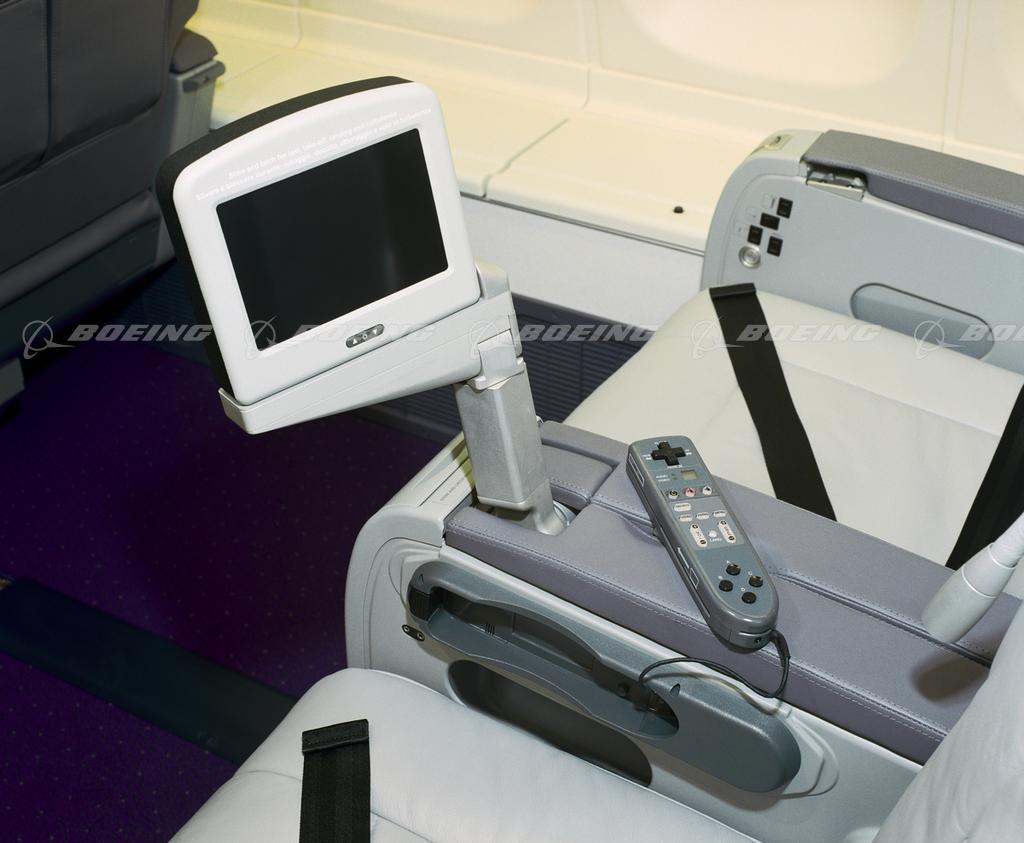BCL
Engineer
I remember back in the late 80s and early 90s (before high def) I heard some AV shop employee claiming that a fancy front projector with a line doubler was as close to movie theater quality as possible. But now I've got just a basic 55" LCD and there is no way anything from the 90s that cost $25K to set up comes even close to the picture quality.Early front projection screens were horrible. The washed out visuals, clumsy pulldown screens, air tube audio, and limited content left a lot to be desired. The 1990's-era AVOD systems were a major improvement by comparison. These days it's the excessive advertising and forced freezing during every public address that annoys me.
I do remember my first flight in a 747-400, and I believe that was a combination of front projection and CRTs popping down from the ceiling. I found a photo from Boeing of a typical armrest display from a 747-400. Obviously in first or business the additional legroom makes it difficult to see what's on a seatback display. There were a bunch of different ways to do this. I believe a lot of bulkhead seats also have displays and trays popping out of the armrest area, where they're stowed away under a hatch or lid.

But I still don't like a screen in the back of a seat. Personal devices are just better for that.






















































